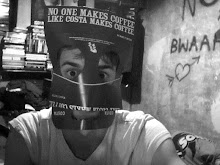They call this the film that launched a thousand back spins. It was this premier hip hop feature film, along with the 1984 Arena documentary Beat This: A Hip-Hop History, that helped shape the global consciousness of the world conquering hip-hop eruption. The title refers to the elaborate and near illegibly creative style of graffiti pioneered by these artists and the film features many of the legends of the era; Grandmaster Flash, The Rock Steady Crew, The Cold Crush Brothers, Fab Five Freddy all performing in real life scenarios. It was fascinating then, as it is now, to see the original elements of hip hop culture. There’s little emphasis on guns, bitches and bling but a hyper-verite representation of MC-ing (rap), B-Boy (break dancing) and bombing (graffiti) at its spiritual home – New York. At the time this footage – and it call it so due to the lack of substantial plot – was revolutionary, for the first time people outside of this small but exploding community saw what life was like in the home of hip-hop.
The plot centres around Raymond – Puerto Rican graffiti legend Lee Quinones. Admittedly, I hadn’t heard of him, even with a fair background knowledge of the films topic (hence fancying blowing 50p on this in Save the Children) but he is one of the founding fathers of the art form even having piece in America’s national galleries. Inner city hood by day – if not a very gawky looking one from a 21st century perspective – and mysterious graffiti hero, Zoro, by night. The film follows his life as he tries to get the girl and make some cash and manage to express himself through his spray can, whilst the scene he’s a part of throws itself at the screen. The problem here as usual is that there is a loose plot woven around these real life events. The characters are designed to accurately portray their respective figures. This is in essence an exploitation film … hmm… hip-hoploitation is the best I can do there. The plot is there purely to make a feature of the, soon to be highly lucrative, hip hop culture of the early 1980’s.
The passion of the subculture is captured really well through the looking glass of a cheap debut feature. Ahearn, who wrote produced and directed the film evidently really believed in the power of the source. Another example of this is Tony Richardson’s 1955 short Momma Don’t Allow that captured a night in the lives of the burgeoning youth movement of northern England, pre rock n roll. It shows us everyone’s fight for expression, to be the face everyone recognises, to be a hero for one day. In the gritty majesty of seeing your art, hastily sprayed on a train, in the night under fear of arrest, charge through the city on the highest platform for everyone to see and admire. In the real life performances of these early rap pioneers in murky red lit clubs storytelling and bragging in a new exciting form and having a blast – and the rapping does stand up much better than you’d expect even if it may wear thin after a while. Some of the performances really are brilliant and I’m always a sucker for break-dancing and graffiti murals unfolding before your eyes.
Certainly, to your modern hip-hop fan the film is laughable, it of course dated but to those willing to give it a bit more of a chance its a truly remarkable view. I certainly enjoyed it on some level due to the Warriors-esque vibe going on but Quinones although certainly qualified to represent his generation does look pretty geeky for a supposed hip hop legend. The style was still emerging and dodgy seventies looks still plague elements of this film. Overall its a little short, it’s a cheap ropey movie but it did its job and is rightfully a genre classic. Any film that can capture the spirit of a subculture as it arises deserves a place in history. It’s not really expected to be a good story, a good film, its just a document – but as it happens it’s alright. I enjoyed it, but, admittedly, it will be a while till I fancy watching it again.

No comments:
Post a Comment